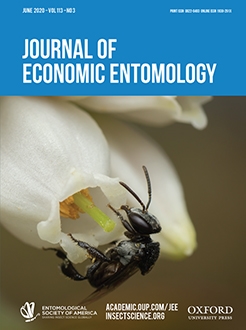Intensified agriculture reduces natural and seminatural habitats and plant diversity, reducing forage available to honey bees (Apis mellifera L. [Hymenoptera: Apidea]). In agricultural landscapes of Iowa, United States, we studied the impact of extrinsic agricultural intensification on the availability of pollen for honey bees by placing colonies next to soybean fields surrounded by either a low or high level of cultivation.The abundance and diversity of pollen returned to a colony were estimated by placing pollen traps on bee colonies during the summer and fall of 2015 and 2016. We observed no difference in abundance and diversity of pollen collected by colonies in either landscape, but abundance varied over time with significantly less collected in September. We explored if the most commonly collected pollen from these landscapes had the capacity to support honey bee immune health by testing if diets consisting of these pollens improved bee resistance to a viral infection. Compared to bees denied pollen, a mixture of pollen from the two most common plant taxa (Trifolium spp. L. [Fabales: Fabaceae] and Chimaechrista fasciculata (Michx.) Greene [Fabales: Fabaceae]) significantly reduced honey bee mortality induced by viral infection.These data suggest that a community of a few common plants was favored by honey bees, and when available, could be valuable for reducing mortality from a viral infection. Our data suggest a late season shortage of pollen may be ameliorated by additions of fall flowering plants, like goldenrod (Solidago spp. L. [Asterales: Asteraceae]) and sunflower (Helianthus, Heliopsis, and Silphium spp. [Asterales: Asteraceae]), as options for enhancing pollen availability and quality for honey bees in agricultural landscapes.
How to translate text using browser tools
10 April 2020
Honey Bee (Hymenoptera: Apidea) Pollen Forage in a Highly Cultivated Agroecosystem: Limited Diet Diversity and Its Relationship to Virus Resistance
Ge Zhang,
Ashley L. St. Clair,
Adam Dolezal,
Amy L. Toth,
Matthew O'Neal
ACCESS THE FULL ARTICLE
It is not available for individual sale.
This article is only available to subscribers.
It is not available for individual sale.
It is not available for individual sale.

Journal of Economic Entomology
Vol. 113 • No. 3
June 2020
Vol. 113 • No. 3
June 2020
Apis mellifera
honey bee
legume
soybean
virus




